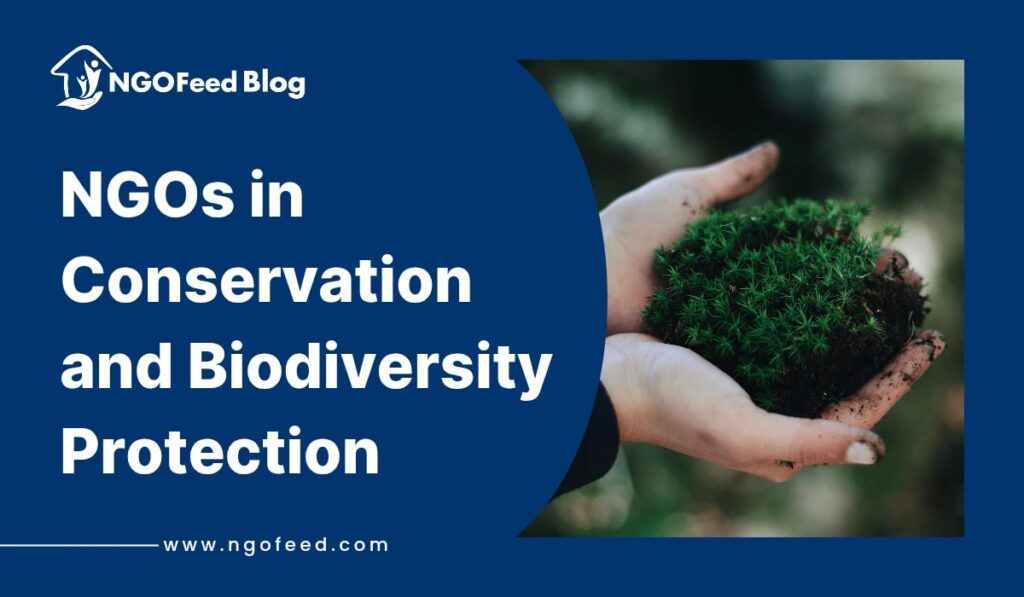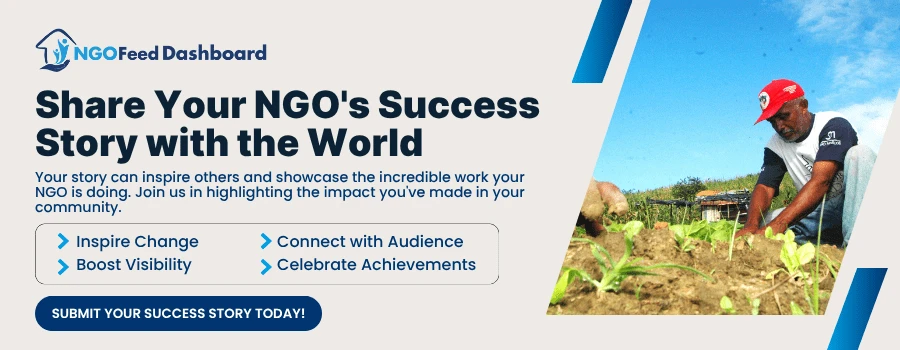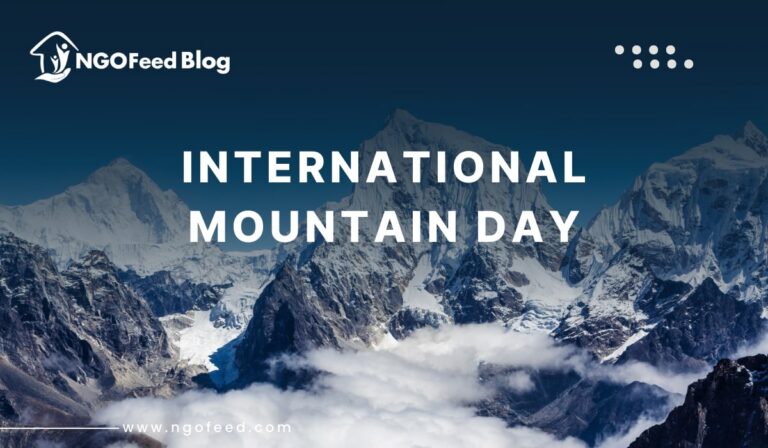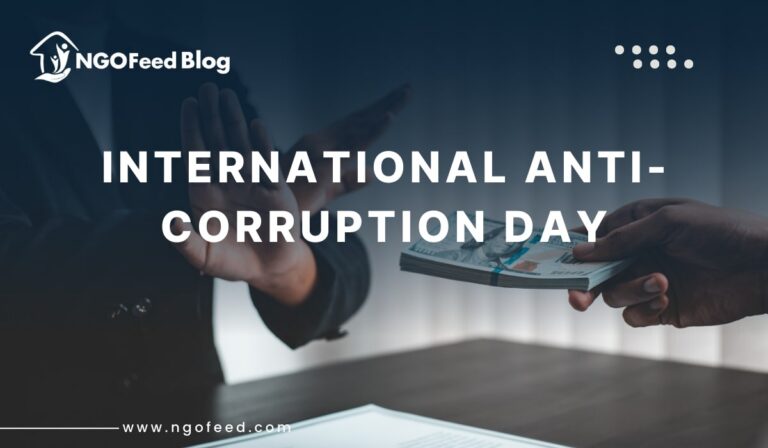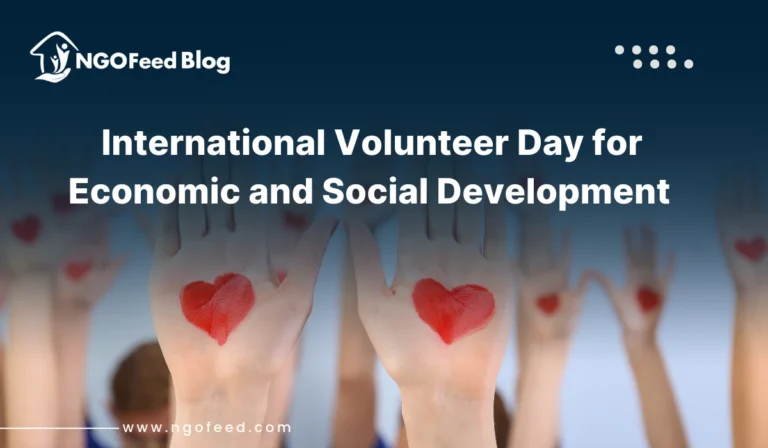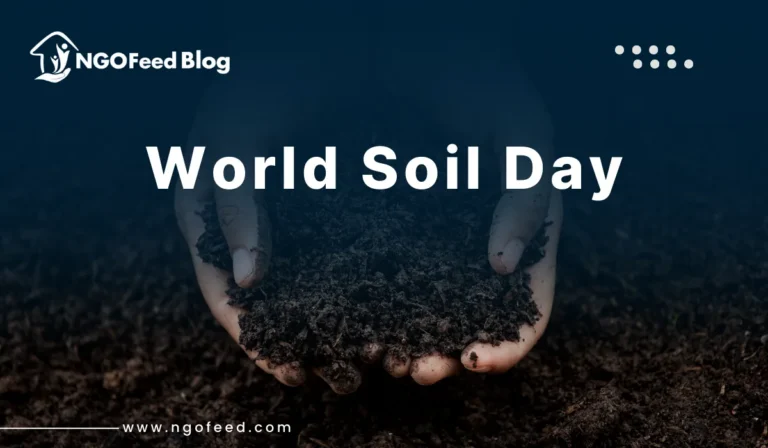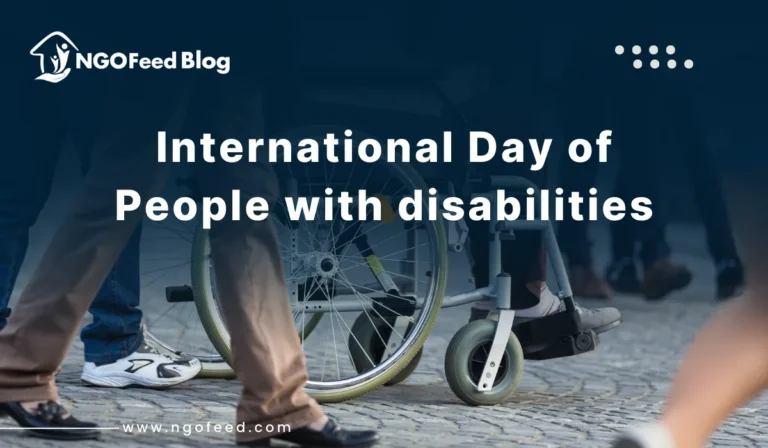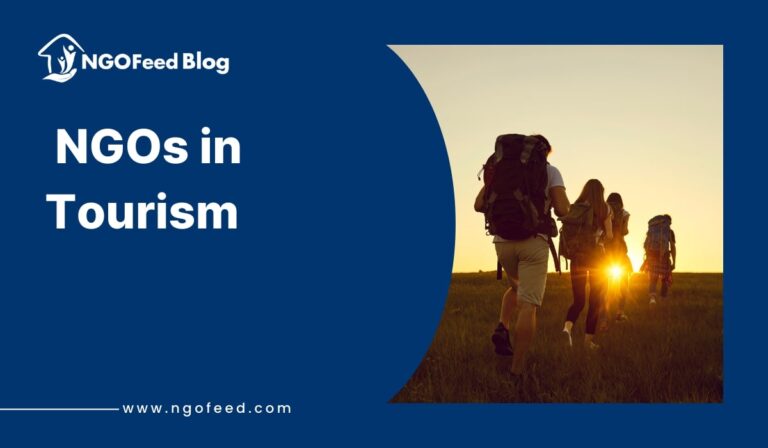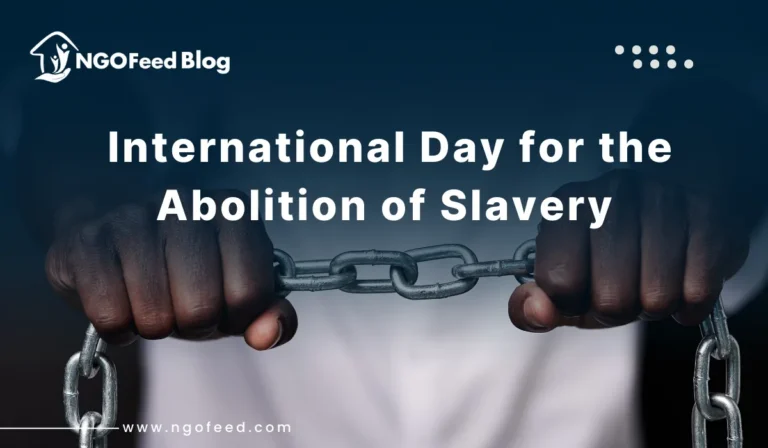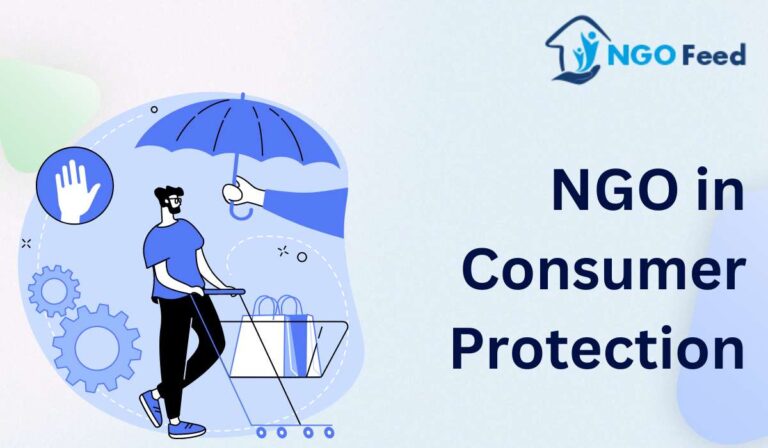NGOs in Conservation and Biodiversity Protection: You may have heard that the current atmosphere is losing battles to difficulties. The environment and biodiversity are threatened by habitat loss, pollution, and climate change. We must act in several ways to address this global issue. Governments, companies, and NGOs in India are vital. They are essential stakeholders. They become specialists in their subject and are essential to long-term conservation plans with boots on the ground.
Read the article to learn how NGOs throughout the world conserve species, ecosystems, and environments. We will reveal their skills, the linked agencies they work with, particular initiatives, and community effects. This approach will deepen your understanding of communities and the role of local groups as advocates for the voiceless and nature stewards.
Table of Contents
Importance of NGOs in Biodiversity Conservation
NGOs are key actors in spreading the message and activities to save the diversity of nature on a global scale. NGOs help us know the value of biodiversity on the planet and be aware of the threats facing it. It creates pressure on the Government institutions and business enterprises to set up protected area facilities, end deforestation and fight against poaching and wildlife crime.
1. Campaigning and Advocacy
NGOs rarely start their way directly to the top; they begin by influencing policies, regulations and public perception. They may conduct protests and petition mobilizations to prohibit activities like shark finning or elephant ivory trade. This is where NGOs have made a significant contribution – a number of national parks and wildlife sanctuaries have been created in their wake. They also investigate and produce reports on ecodisasters to point fingers at the people behind the crime.
2. Research and Monitoring
Some non-profit organizations concentrate on comprehensive research about endangered species or the ecosystems that are close to collapse. They conduct surveys of wildlife species, evaluate habitats, and detect threats. The data and insights are then used with strategies that are based on the evidence. Hence, NGOs have created a list of areas most crucial to biodiversity and ecosystem functions, which should be a priority for preservation. They engage in a study of how each population will be affected by climate change and the areas in which they live.
3. Community Engagement and Education About the Campus
NGOs have been active partners in ripping local communities out of their ignorance, creating understanding among people, and offering rewards for biodiversity protection. Similarly, they organize environmental education classes for youth, in particular. Through community empowerment and active participation, NGOs become lifelong partners in the struggle to save plant and animal species facing extinction worldwide as well as their habitats. Community support, which is a prerequisite for conservation success, must be present.
To conclude, it can be stated that NGOs are among the major forces in terms of biodiversity conservation globally as they assist in the formulation and sustenance of conservation through campaigning, research and community projects. They are not only influencing the conservation trends, but they are also the leading force on the front lines of this battle.
Also read: Role of NGOs in Environmental Protection
Major Threats to Biodiversity Worldwide
In this section, you will able to learn what the major Threats to Biodiversity Worldwide.
1. Habitat Loss and Fragmentation
The most reckoned environmental menace is habitat loss. As the population of humankind increases, this requires the transformation of forests and other natural areas into agricultural land or development for housing and industry. Catchments are fragmented into isolated islands that aren’t big enough to support the migration of animals or plants of the dispersed seeds. More and more species are set to extinction as their habitats are destroyed.
2. Poaching and Illegal Wildlife Trade
Hunting and trading of wildlife products are poaching and the main cause of biodiversity loss. It is not a secret that the International Black Market is the buyers and sellers of illegal objects such as rhinoceroses, elephants, tigers and rosewood trees. As demands for animal parts and rare woods increase, that greatly intensifies the poaching and pushes it to the edge of the species.
3. Pollution
Human-induced activities such as burning fossil fuels, production and mining generally unleash toxic chemicals and waste into the natural environment, which are often responsible for altering ecosystems. Marine life is at risk as plastic pollution invades the oceans. One of acid rain’s devastating effects is the loss of plants and aquatic biota. Light and noise pollution disrupt wild animal behaviour.
4. Invasive Species
Invasive species, being the centres of non-native plants, animals, and microorganisms that move fast and inflict damage to the normal biodiversity of the area, are non-native and often multiply in the ecosystem. These organisms are normally introduced by chance. Through international trade and travel, they flourish and dominate the native creatures by both competing and predating at the local level. They are one of the biggest endangerments to the biodiversity of the planet.
5. Climate Change
A major impact of climate change on the natural world is the great danger to biodiversity. As the temperature increases, the geographical range of many species is moving, and the timing of important events like flowering, breeding and migration is shifting. Coral bleaching, sea level rise, changing weather patterns, more frequent extreme weather events, and other effects of climate change have killed habitats, disturbed ecological connections, and threatened food supply. Immediate measures should be taken to reduce the level of greenhouse gases and save biodiversity.
Role of NGOs in Conservation of Endangered Animals and Ecosystems
Non-governmental organizations are the key players when opposed to the current global conservation initiatives. These are the non-profit organizations that devote their efforts to the protection of various human and wild species.
1. Raising Awareness
NGOs conduct public campaigns for the purpose of educating people on environmental ills and their significance. They convey messages about endangered species, like those in the forests or plains, which should be protected. The idea is to create awareness for the public, which should, in turn, motivate them to act and modify their behaviours in order to preserve wildlife species and ecosystems.
2. Protecting Habitats
NGOs buy land and build wildlife sanctuaries and protected areas for the endangered species. These organizations collaborate with governments and private landholders in order to develop new national parks or preserve that link animals moving across borders. Maintaining habitats is vital for ensuring the survival of plant and animal species from being threatened with extinction.
3. Combating Wildlife Crime
At least some NGOs fight the illegal trafficking of wildlife products and poaching, which have been one of the main causes of many endangered species such as elephants, rhinos, tigers, and sea turtles extinction. They embark on campaigns to convince governments to let stiffer wildlife offences laws be passed and cooperate with law enforcers to track and patrol wildlife area parks. NGOs also target customers who purchase products made from illegal wildlife, such as ivory and rhino horns, through campaigns.
4. Research and Advocacy
NGOs research the state of rare species’ survival and the ecosystems in which they are found to set priorities for their protection of them. They rely on scientific evidence to formulate a case for new wildlife policies and petition governments on environmental regulations. A wide variety of NGOs are coordinating with the indigenous communities by involving them in conservation schemes that would protect both nature and human livelihoods. Through science-based policy recommendations, NGOs are aligning the world with a sustainable future.
In every sense, NGOs develop as the defenders of natural diversity. They are the advocates of the battle against extinction, shielding threatened wildlife and the non-human areas that have no voice of their own.
Notable Conservation NGOs Making an Impact Globally
1. World Wildlife Fund (WWF)
With its outreach programs in more than 100 countries, the World Wildlife Fund stands as one of the largest conservation organizations helping to preserve biodiversity as well. They are fighting to protect the ecosystems, curb the effects of global warming and restrict illegal trading in wildlife. Conserving these species is one of the area’s main services. These animals include the tigers, elephants, whales and marine turtles. Furthermore, they engage governments and businesses to build up an environmentally friendly, socially responsible business climate.
2. Conservation International
Conservation International is all about safeguarding the zones of high biodiversity, which are home to many of the threatened species globally. They are responsible for the designation of protected areas, the prevention of deforestation as well as cooperating closely with indigenous people. One of their big projects is the protection of the Cordillera Azul National Park of Peru, which is a magnificent rainforest that occupies 680 thousand hectares. They are the ones leading the development of innovations required for monitoring forests and wildlife.
3. The Nature Conservancy
The Nature Conservancy promotes scientific practice in conserving natural sites and ecosystems. They are the ones who have successfully prevented over 119 million acres of land and about 5000 miles of rivers from being polluted worldwide. Besides purchasing and preserving a piece of land, they work with a range of stakeholders to jointly develop sustainable land use policies and practices. Some of their primary actions are conserving more than 60 coastal biodiversity locations and restoring coral reef ecosystems in places like Australian waters, Hawaii, the Caribbean, and the Island of Indonesia.
4. Greenpeace
Greenpeace, which is a renowned non-governmental organization, primarily has nonviolent direct action and lobbying as its main tools for defending the environment against environmental problems. They are active in the defence of ancient forests and against climate change; they also care about the oceans and biodiversity; they fight against the use of toxins and promote farming based on sustainable practices.
They scrutinize the abuse of the environment and ultimately push for political, legal or transformed lifestyles to assist the environment. Their team of volunteers has lent them a hand in making people aware of different environmental issues. Therefore, they have had a considerable impact in this direction.
What You Can Do to Contribute to Conservation Through NGOs
1. Donate
Another smart and convenient opportunity for you to donate to NGOs’ nature conserving activities is through your contributions. Many worthy NGOs display their ‘donate’ sections on their websites as a means of funding. Whether you give a few dollars or ten dollars, every single amount matters. So just donate what you can. Instead of paying dividends to investors, the revenues from your green energy investment contribute to initiatives such as habitat conservation, wildlife surveys, and community education.
2. Volunteer
Why not spend your free time, or skills, to NGOs volunteering if you can? A range of companies can use assistance with activities like wildlife monitoring, public information, and fundraising, among others. Volunteering would be a nice opportunity for you to earn sufficient knowledge and practice while you are working to preserve biodiversity. Contact NGOs in your area for a chance to see if they need people like you who are willing to volunteer and help them do a good job at what they love.
3. Promote Awareness
Even if you can’t provide money or time, you can promote awareness of their conservation efforts and goals. Digital marketing initiatives depend on social media, so follow, share, and retweet their articles and campaigns. Tell others about their significant and fascinating job. Tell your local government you support the NGO in a letter.
All acts affect our natural environment. Conservation NGOs work hard, so any donation is appreciated. We may all donate so these groups have the finances and reserves to safeguard life on Earth for future generations.
Also Read: Role of NGOs in NGOs in Conservation and Biodiversity Protection
Conclusion
Actually, volunteering your time, energy, and money for conservation NGOs may help conservation programs succeed. Even if you can’t give, sharing their work on social media or with friends promotes their good work. As community members, environmentalists, and policymakers, we can protect endangered animals and their habitats. Not just governments and companies can green the Earth.
By supporting reliable local and international NGOs, you join a larger humanitarian community. You can influence the world by using your purchasing power to support the individuals you desire. Earth needs more individuals like them who aren’t scared to take care of it, even if it’s tiny. Conformity can help us solve our immediate environmental issues. It starts with you—your consciousness, decisions, and words! The sustainable future will actively safeguard biodiversity.

